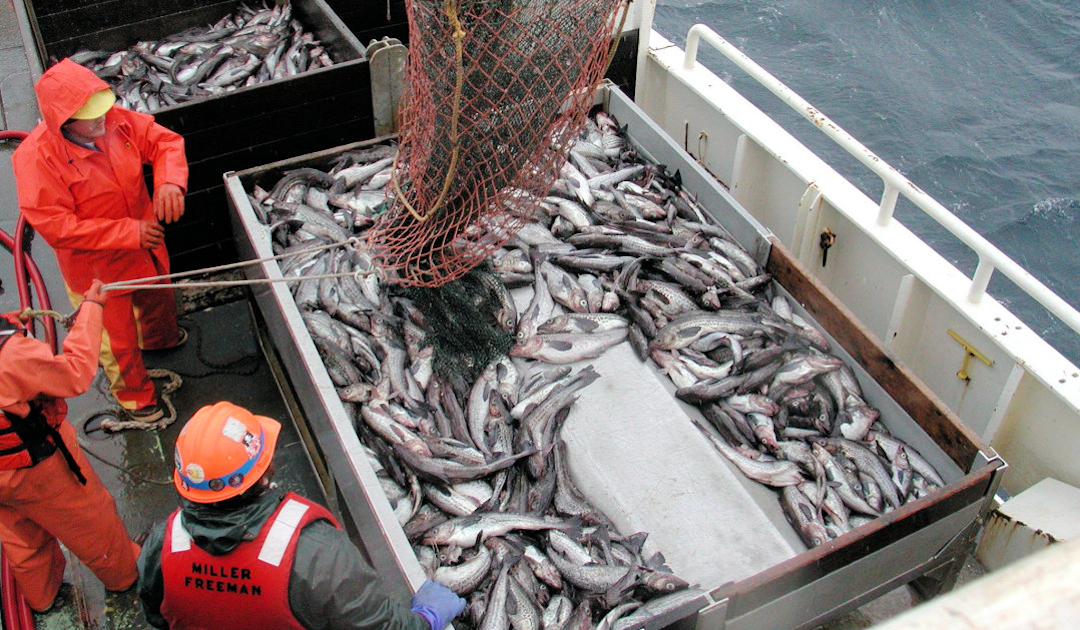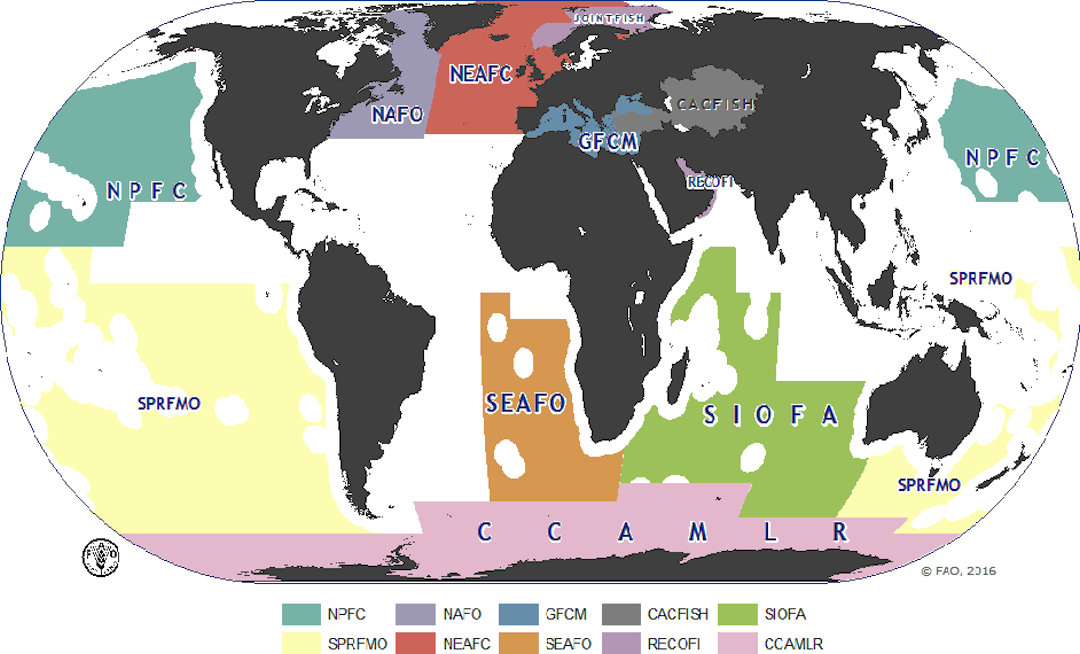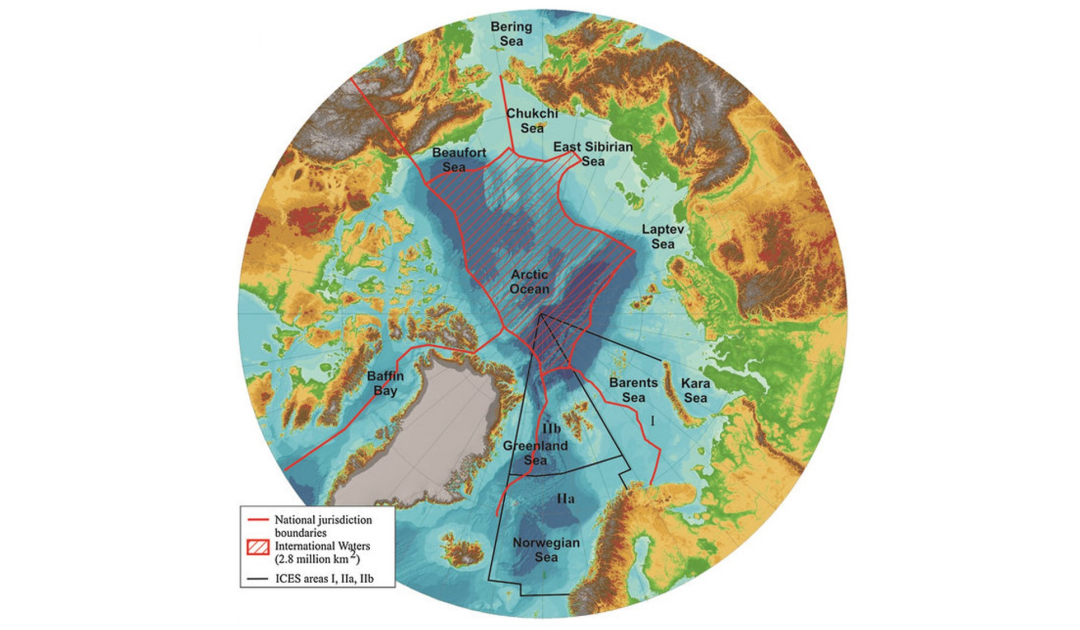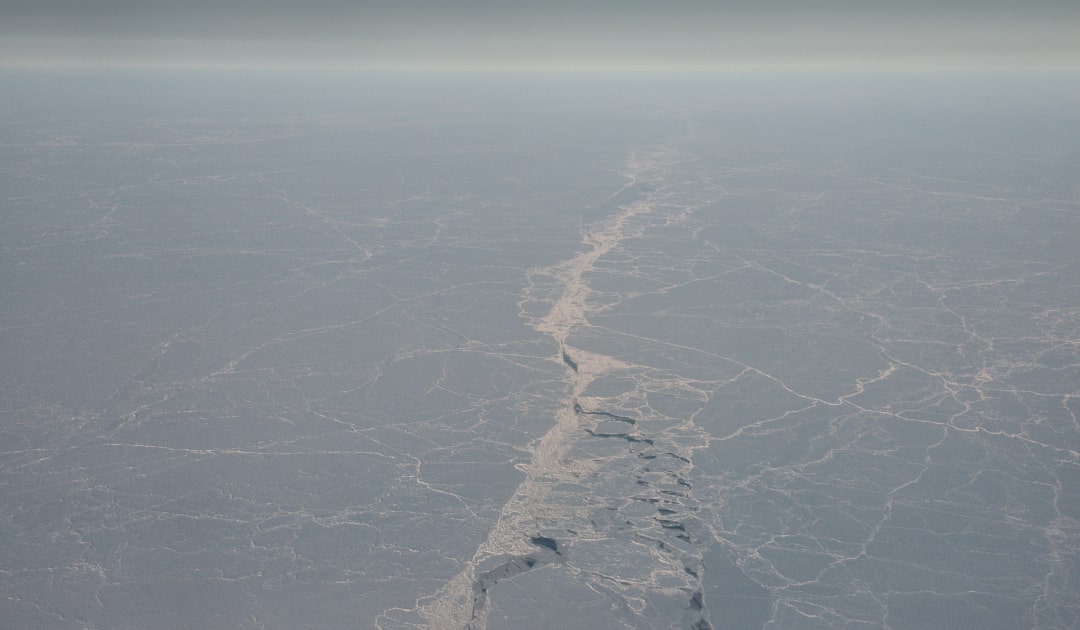
The Arctic Ocean is Earth’s northernmost water body, and it is relatively isolated from other oceans. This plays a crucial role in the distribution and migration of marine species, including fish stocks there. Scientists have found that climate change impacts animal migration, especially in a rapidly changing Arctic region. Alterations are linked to changing feeding grounds, and fish species move to other locations in search of new food sources or more favourable environmental conditions. Thus, projected shifts in bioclimatic habitats of marine species have already been described for certain fish and shellfish stocks in the Arctic Ocean. It may have a significant effect not only on ecosystems themselves but also on nations who are dependent on fish stocks. The existing management regime seems to be not ready to adapt to alterations in fish stocks caused by climate change in the Arctic region.
Straddling fish stocks are those fish stocks which migrate through or occur in more than one Exclusive Economic Zone (EEZ), a zone generally extending 200 nautical miles from shore. Such stocks consist of species like pollock, jack mackerel, cod, halibut, and squid. And the term “highly migratory fish stocks” refers to fish species which undertake ocean to ocean migrations and also have wide geographic distributions. The United Nations Convention on the Law of the Sea (UNCLOS) provides a legal framework for all relevant issues of marine affairs that includes regulation for the exploitation and management of marine living resources, including disputable fish stocks. In 1995, the UN passed the Fish Stocks Agreement – which empowered intergovernmental organizations known as Regional Fisheries Management Organizations (RFMOs) to address the issue.

Of note, Regional Fisheries Management Organizations (RFMOs) form one of the most important building blocks of fisheries management for the high seas. Most areas of the high seas where there are significant fisheries are subject to the competence of general RFMOs to set legally binding conservation and management measures. Thus, for the northern waters it is worth mentioning such general RFMOs as the North East Atlantic Fisheries Commission (NEAFC), the Northwest Atlantic Fisheries Organization (NAFO), and the North Pacific Fisheries Commission (NPFC). In the northern hemisphere, there are also a few specialized RFMOs for economically important fish species such as salmon (NASCO, North Atlantic Salmon Conservation Organization) or pollock (CCBSP, Convention on the Conservation and Management of Pollock Resources in the Central Bering Sea).. They have legally binding measures regarding fisheries in the high seas, but a very narrow mandate. Additionally, the joint fisheries commissions seem to be one of the most effective means of cooperation, for instance, the Joint Norwegian-Russian Fisheries Commission (JointFish) shows an example of the long-standing bilateral cooperation in the Barents Sea.

For highly migratory species, “the coastal State and other States whose nationals’ fish in the region for the highly migratory species listed in Annex i shall cooperate directly or through appropriate international organizations with a view to ensuring conservation and promoting the objective of optimum utilization of such species throughout the region, both within and beyond the exclusive economic zone.”. For straddling stocks, coastal States and States that fish for such stocks in an adjacent zone are required to, either directly or through appropriate sub-regional or regional organizations, agree on conservation measures for the stocks in adjacent areas. Without this provision, states would be free to undermine a coastal State’s conservation measures by fishing just on the other side of the boundary line.

The future of fishing in the Central Arctic Ocean will be greatly affected by ecosystem changes and human fishing activity in the world’s other oceans. New and evolving fisheries may occur in the Arctic region in the near future. In fact, the UNCLOS was concluded at a time where there was little appreciation of the impacts of anthropogenic global warming of the oceans, and did not mention climate change in any of its provisions. Among the recent efforts is the Agreement to Prevent Unregulated High Seas Fisheries in the Central Arctic Ocean signed in 2018 (and entered into force in 2021) seems to be a legal instrument for a control of the large, distant-water fishing fleets with the agreement for a 16-year moratorium on commercial fishing on the high seas portion of the Central Arctic Ocean (CAO).

The Arctic and highly-productive sub-Arctic waters attract fish, usually these aquatic areas refer to national EEZs of the Arctic states. Climate change is expected to impact biological communities in the ocean, with both direct and indirect effects on their distribution. Nowadays, the Arctic is home to a few of the world’s largest fish stocks that support valuable commercial fisheries: among them are the Atlantic cod in the Barents Sea, pollock in the Bering Sea, the Pacific salmon inhabiting waters along the coast of Canada and Alaska, etc. Shifts in fish distribution have already been observed in warming sub-Arctic waters: northward shifts in grey gurnard have been shown near Iceland. In the Bering Sea, due to a shrinking cold pool that develops in the winter beneath the sea ice, some southern species such as red king crab and northern rock sole have expanded northward. Indigenous fishers have noted that capelin can be found in the Canadian Arctic, however there was no capelin before, and it has shown up lately. The Arctic has historically been presumed a lower risk region for biological invasions due to harsh environmental conditions and inadequate food resources. For example, the cod easily adapts to a new environment in the Barents Sea, being a gluttonous predator, it greatly influences the rest of the ecosystem. Further environmental changes, including shifts in fish species composition, are likely to have major impacts on both commercial fishing and food security of native peoples.

Fisheries have been and still are a key industry across the Arctic region. Ongoing climate change brings modified, novel, more variable and extreme conditions and selection regimes to fish species. As the oceans warm, fish move to track their preferred temperatures and search for new feeding grounds. A rapidly changing environment will have a significant effect on fisheries and its governance instruments, and may potentially destabilize current management standards. International cooperation remains to be one of the most important features of successful fisheries management for straddling and highly migratory fish stocks in the Arctic region. Joint scientific efforts and new approaches in fisheries management may lead to the significant reinforcement of the existing governance complex in alignment with a rapidly changing region.

Dr. Ekaterina Uryupova is a Senior Fellow at the Arctic Institute. She has been working in the polar regions as a researcher and a polar guide. Her areas of expertise revolve around climate change, marine ecosystems, fisheries, and environmental policy.
More to the topic:





